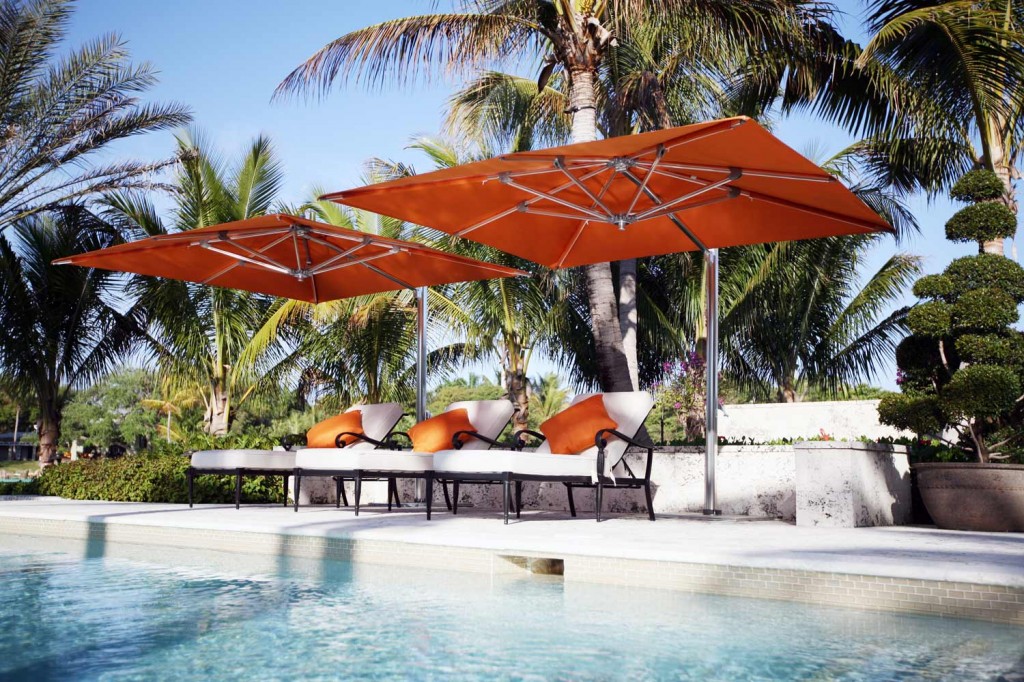Keeping cool in the outdoors is only as good as your cover.
Planning your outdoor space might come second to designing your home’s interior, but when the time does arrive, the right composition of shading elements can make or break the scene.
“Outdoor areas of the home are very important in setting the feel and tone of the entire house,” says Gail Green of New York’s Gail Green Interiors. “They are a prelude to what one will see on the inside. Cheerier appointments on the exterior correlate to a lighter, airier feel in the home.”
A smartly positioned umbrella in a color scheme that either matches or sets off the corresponding landscape can transform the outdoor area into a comfortable, pleasing retreat. After all, an umbrella or other shading element can be as much a piece of furniture as a chaise lounge or Adirondack chair.
Against a coastal landscape, Green favors umbrellas, fans, and awnings with more subdued colors, like beiges, whites, and soft blues. “Natural colors, as opposed to vibrant ones, which are better suited for year-round warmer climates such as Florida, set a more modern tone, being more recessive.”
That said, it always depends on the homeowner’s taste, and outdoor staging shouldn’t contradict the interior. “The outdoor should be consistent with the indoor,” Green says. “If the house is colorful, so, too, should be the outdoor furnishings. There must be continuity.”
Many suppliers today are manufacturing shade elements that turn any outdoor space into a comfortable haven. Tuuci, a manufacturer of parasols, pavilions, and lounges, is one of the leaders in the market. The Miami-based company’s Ocean Master Max Cantilever (pictured above) is a polished and anodized marine-grade canopy structure that extends from an oval-shaped mast and provides shade over tables and chairs.
If you are seeking a bit of Southern California style for your outdoor space, Santa Barbara Designs takes design inspiration from the exotic umbrellas of the open-air markets of the Mediterranean. The company fashions umbrellas under an array of collections, using materials like teak, mahogany, aluminum, and stainless steel.
Of course, durability is as much a concern as aesthetic appeal. Today’s best umbrellas are made of acrylic and are solution-dyed to ensure that colors are locked in, says Hans Galutera, a designer with BG Studio International, headquartered in New York City.
While Galutera often employs umbrellas as a shading element (he appreciates their portability and flexibility), whenever possible, he also employs natural elements, such as trees, vines, and pergolas to provide cover from the sun, not to mention some privacy.
“They have a dappling effect and create shade and light that is artistic,” Galutera says. “When designed right, the backyard becomes artwork.”


